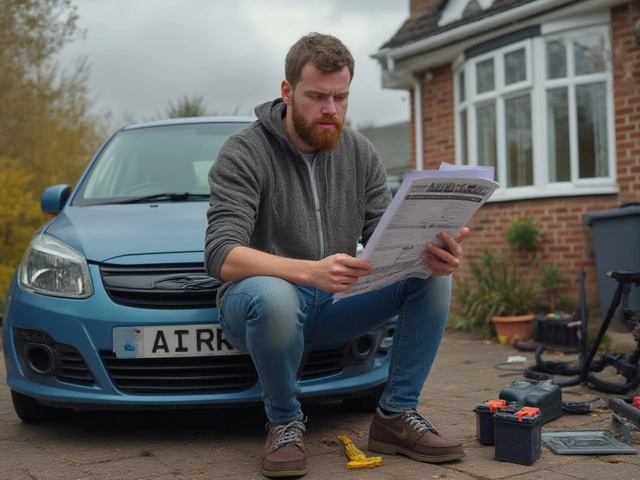Signs of Bad Suspension – How to Spot Problems Early
Did you know a worn‑out suspension can wreck your tires and make every drive feel rough? You don’t need a mechanic’s degree to catch the early clues. In this guide we’ll break down the most common symptoms and give you clear steps to take, so you can stay safe without guessing.
Common Warning Signs
First up, listen and feel. If you hear a steady clunk when you hit a bump, that’s a red flag. It usually means a shock absorber or strut is losing its grip. Next, check your tires. Uneven wear – especially more on the inside or outside – often points to misaligned suspension parts.
Does the steering wheel shake when you reach 50 km/h? Vibration in the wheel is a classic sign that your control arms or ball joints need attention. Another tell‑tale is excessive bouncing after a dip. A healthy suspension smooths out bumps; if your car continues to bounce, the springs might be weak.
Take note when you brake. If the front of the car dives sharply, the front shocks are probably exhausted. Finally, any pulling to one side while cruising on a flat road suggests a broken or worn component on that side.
What to Do When You Spot a Problem
Don’t ignore the signs. Start by giving your wheels a quick visual check. Look for leaking fluid around the shocks or any broken rubber boots. If you’re comfortable, pop the hood and inspect the struts for dents or oil seepage.
When in doubt, book a suspension inspection with a trusted garage. Explain the noises, the bounce, and any tire wear patterns you’ve seen – that helps the tech zero in on the issue faster. While you wait for an appointment, avoid hard cornering or heavy loads, as these can worsen the damage.
Routine maintenance can stop many problems before they start. Keep your tires at the correct pressure, rotate them every 8‑10 000 km, and have your alignment checked annually. A quick visual of the suspension after a long road trip can also reveal new cracks or loose bolts.
Bottom line: a bad suspension isn’t just an uncomfortable ride, it’s a safety risk. Spotting the signs early saves you money on pricey repairs and keeps you in control on the road. If any of the symptoms above sound familiar, give your local tyre centre a call – they can diagnose the issue and get you back to a smooth drive.
 27 July 2025
27 July 2025
Can You Drive With Bad Suspension? Risks, Signs, and What Happens Next
Wondering if you can drive with bad suspension? This deep dive breaks down what bad suspension feels like, real-life risks, warning signs, and what to do next.
 2 March 2025
2 March 2025
How to Determine if Your Suspension Needs Replacing
If you've ever wondered whether it's time to replace your car's suspension, you're not alone. Recognizing the signs of a worn-out suspension can prevent further damage and save you money in the long run. From strange noises on bumpy roads to uneven tire wear, being aware of these indicators ensures a smoother ride and increased vehicle longevity. Here's how you can effectively assess the state of your suspension.






0